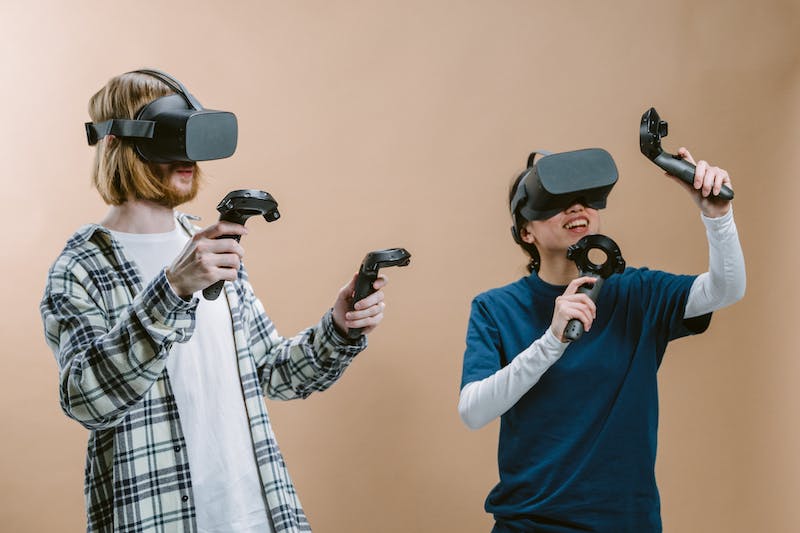In the past few years, virtual reality (VR) technology has grown quickly, giving users more immersive and interactive experiences than ever before. However, as with any new technology, there are potential risks and downsides that users need to be aware of. One such risk is the potential impact on your physical and mental health when you wear a VR headset for too long.
We’ll extensively talk about the different things that can happen when you wear a VR headset for a long time, as well as what you can do to reduce the risks.
Why is VR use on the rise?
VR technology is getting easier for people to use because there are more headsets and content on the market. VR is becoming more and more popular for gaming and entertainment, as well as for learning and training simulations, medical procedures, and designing buildings.
What happens when you wear a VR headset for too long?
VR technology gives you an immersive and interesting experience, but wearing a VR headset for a long time can hurt your physical and mental health in a number of ways.
1. Motion sickness
When VR technology is used for a long time, motion sickness is one of the most common side effects. The virtual reality world can make your brain believe that you are moving, while your body is still. This can cause an imbalance in your senses, leading to nausea, dizziness, and headaches.
2. Eye strain and vision problems
Staring at a screen for an extended period can cause eye strain and dry eyes. In addition, VR headsets often have a high resolution and refresh rate, which can cause eye fatigue and discomfort. Long-term VR use can also cause temporary vision problems like double vision, blurry vision, and trouble focusing on things in the real world.
3. Postural instability and muscle strain
Wearing a VR headset can also affect your posture and cause muscle strain. When using VR, people tend to move less, which can lead to a sedentary lifestyle and increase the risk of developing health issues such as obesity, heart disease, and diabetes. In addition, VR headsets can be heavy and cumbersome, causing neck and shoulder strain.
4. Psychological effects
VR technology can also have psychological effects on users. When you use virtual reality for a long time, it can make you feel lost and disconnected from the real world. This feeling is known as “cyber sickness,” and it can cause anxiety, depression, and other mental health issues.
How to Minimize Risks of Using VR
While the risks associated with using VR technology can be alarming, there are several ways to minimize these risks and enjoy the benefits of VR safely.
Take frequent breaks
Taking frequent breaks is essential when using VR technology. You should take a break every 30 minutes to avoid motion sickness and eye strain. During breaks, move around and stretch your muscles to prevent postural instability and muscle strain.
Adjust the settings
Adjust the settings of the VR headset to suit your needs. The resolution and refresh rate can be lowered to reduce eye strain, and the brightness can be adjusted to prevent eye fatigue.
Use the right equipment
Choose the right equipment when using VR. Look for lightweight and comfortable headsets with adjustable straps to minimize muscle strain. Use motion controllers instead of a keyboard or mouse to move around more and avoid becoming too sedentary.
Limit your exposure
Limit your exposure to VR technology to avoid the psychological effects of prolonged use. Use VR technology for short periods and alternate it with
Final thought
Now that we’ve shown you what could go wrong if you wear a VR headset for a long time and also outlined the various risks, including motion sickness, eye strain, postural instability, and psychological effects such as anxiety and depression. We highly recommend that you follow the VR usage safety tips.
